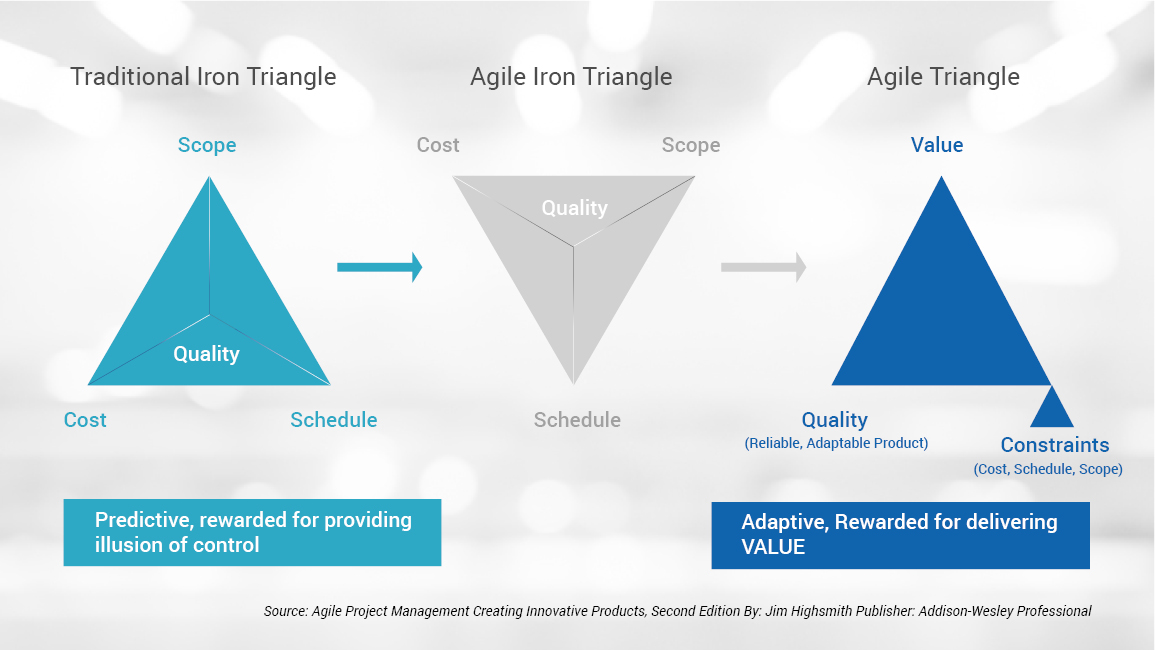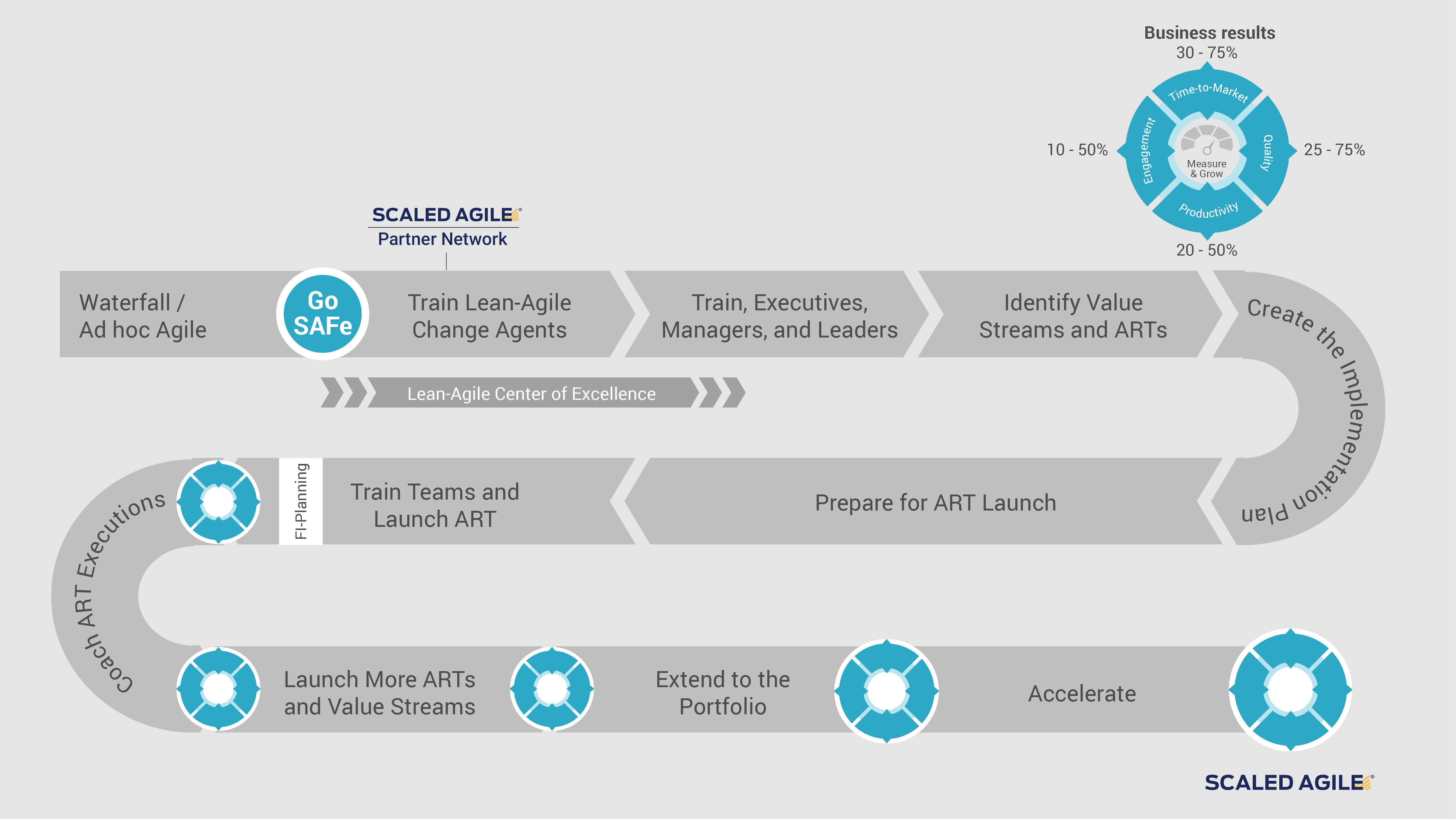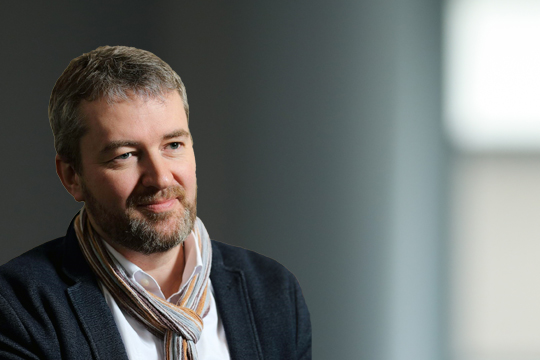There was a lot of buzz about the end of the so called “waterfall project era” in last years. Many companies turned to Agility as to the salvation. Some of them successfully, but some of them not. Based on the experience, that we collected at Detecon International through our Agilization projects in the last years and through our close partnership with Scaled Agile, Inc., let me share with you several major observations, that may help you with your decision, if Agility and Agile organization is right for you.
Where is the issue with not being Agile?
The old “classical” waterfall project approach is a robust, but also heavy methodology for project management. It looks convenient and predictable for big organizations as it breaks down project activities into linear sequential phases, where each phase depends on the deliverables of the previous one and corresponds to a specialization of tasks.
But the long term “predictability” is usually the major trap. Once you define the project scope in the waterfall, it is usually hard to change the direction. This may be good for projects, where you are clear about the expected final outcome. But in the current digital world, where customer demand and customer centricity are changing fast and decide about the company success, it is literally not possible to do good long-term targeting.
In that respect, if we speak about the classical project parameters: Time – Cost – Quality/Quantity (Schedule – Budget – Scope), the majority of projects have difficulties to fit into this magic triangle.
Another significant issue with the waterfall approach is that it is predominantly project driven and not concerned with the aspects of learning culture and continuous improvement of the organization capabilities. Barriers between different organization units like IT, marketing, sales, HR, and finance are retained. This separation in waterfall is hardening the common understanding.

So should we go Agile?
The answer from my side is clear, yes! You can only benefit from the Agile approach and should try to introduce it gradually throughout the whole organization. But going Agile is not a simple exercise. Some organizations believe in a kind of self-execution, but that never happens.
Here are five major Agilization steps, that I would recommend you to pay attention to:
1. Decide, communicate and move
Many organizations keep talking about the need for Agilization for a long time. In many cases, employees do not see concrete activities starting and after a while react allergically to the word "Agile". Especially, as some organizations use the word “Agile” to cover chaotic moves and ad hoc decisions.
Once you as an organization management decide to use the Agile approach, communicate it clearly to the organization, dedicate a transformation team and execute correspondingly.
2. Select industry standards
I have heard it so many times: “Our organization is special”. It is for sure true, but … There are industry standards, that are based on experience with many “special organizations”. Here, you should apply the 80:20 rule as you don’t want to waste time with developing your own methodology or tailoring some standard. You just don’t want to spend time on aligning your specific changes to the industry standard once it is updated to the new version. Many companies already went into this trap.
Detecon is a Golden partner of The Scaled Agile Framework (SAFe) developed by Scaled Agile, Inc. The SAFe methodology is a leading Agile Framework that enables to manage not just small IT projects, but also larger programs and solution streams as well as business organization parts. We have many years of experience with SAFe projects across a variety of industries and public sector organizations. It is worth it to stick to such constantly developing standards.
3. Get support for implementation
Once you decided and selected your standard, look for an implementation partner. This partner should not only help you with specific training, but also design the implementation roadmap earlier and support you on the implementation journey. Below you can see the suggested Implementation roadmap for SAFe.

4. Invest into people and organization
Going agile is not just a technical or project thing. The major change from waterfall and the old rigid organization is that you create mixed teams with people from different areas.
In addition to the classic hierarchical organization, there is a dual organizational structure for specific value streams. This enables people in the teams to better understand the topic from other perspectives and deliver better value to the organization.
Investment into trainings, people skills and leadership culture are key changes in Agile as opposed to the old waterfall.
5. Don’t stop at IT
As already mentioned, Agility is not just about IT projects and development. The latest version of SAFe 5.1 explains how functional domains in all parts of the enterprise enable business agility by continuously exploring new ways to apply the Lean-Agile principles and practices to their unique contexts.
You can look at Agile Marketing, Manufacturing, HR, Supply Chain management etc. here to get further insights.
In a nutshell, if you still consider to go Agile, I can only recommend you using the SAFe framework. Once you make the decision, move fast, communicate clearly, and engage your organization as much as possible. At the end of the day, it is all about employees.







